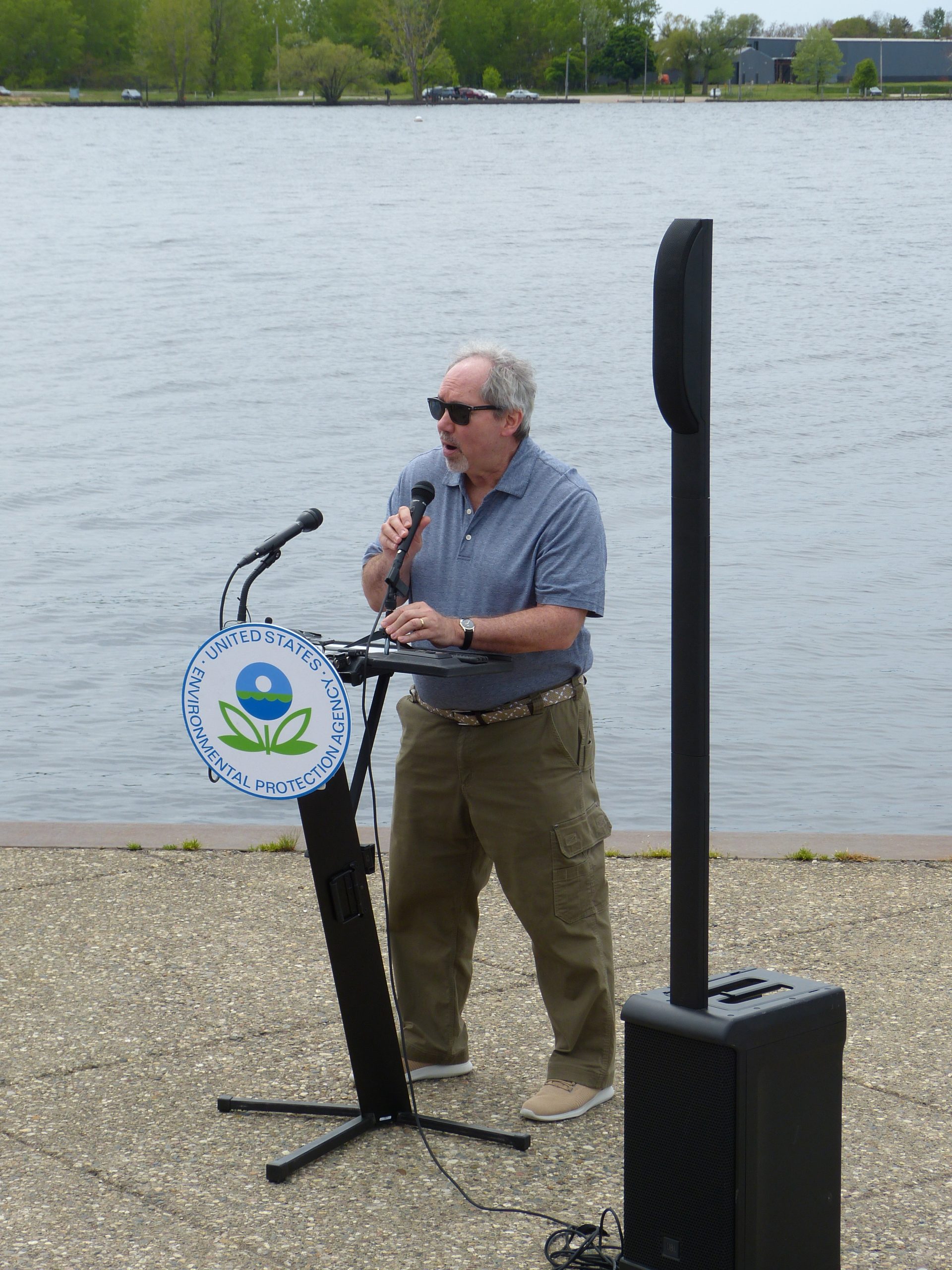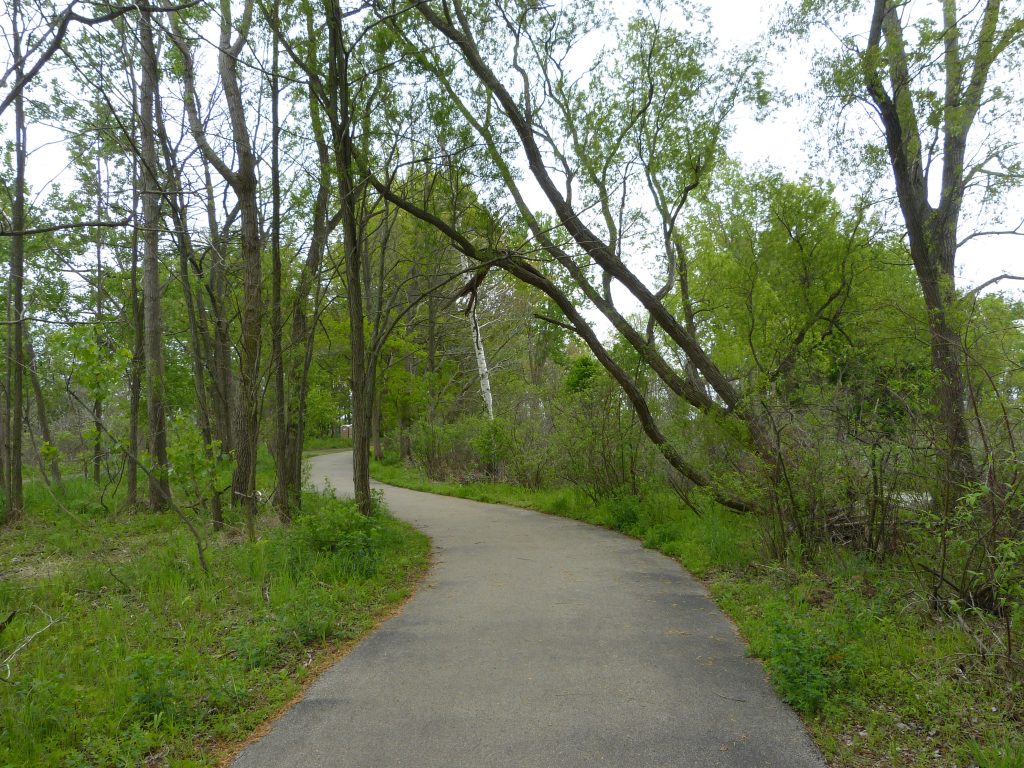by Kate, Calvin, and Kim Holtrop
photos by Tim Holtrop
May 24th, 2022, Muskegon—Local, state, and federal government officials, among other stakeholders, gathered for a press conference at Muskegon’s Heritage Landing to celebrate last fall’s completion of all the management actions that are required before Muskegon Lake’s Area of Concern delisting process can begin. Finally, after many years of restoration efforts, Debra Shore, the Environmental Protection Agency’s (EPA) Regional Administrator for the Great Lakes area, said, “We’re celebrating an exciting milestone—all the projects necessary for the cleanup of the Muskegon Lake Area of Concern are finally complete.” Once the evaluation process is complete, the lake will be officially delisted as an Area of Concern.

Erika Jensen, executive director of the Great Lakes Commission 
Chris Korleski, director of the U.S. Environmental Protection Agency’s Great Lakes National Program Office 
Liesl Eichler Clark, director of the Michigan Department of Environment, Great Lakes and Energy 
Debra Shore, Region 5 administrator and Great Lakes National program manager for the Environmental Protection Agency 
Muskegon Mayor Ken Johnson 
Carrie Robinson, director of the National Oceanic and Atmospheric Administration Fisheries Office of Habitat Conservation
The United States/Canada Great Lakes Water Quality Agreement was amended in 1987 to single out forty-three Areas of Concern (AOCs) around the Great Lakes, fourteen of which are in Michigan. The slow but steady progress in Michigan’s AOC program has successfully restored and delisted three of the fourteen. Progress is continuing at the other eleven.
The Muskegon Lake AOC, the next in line for the delisting process, is divided into eighteen sites, including the lake itself and portions of its tributaries. There have been fourteen Beneficial Use Impairments (BUIs) identified in the Great Lakes area. BUIs are chemical, physical or biological changes sizable enough to cause significant degradation of the environment. Muskegon Lake is listed with nine of the fourteen. BUIs have limited the lake’s beneficial uses, like consumption of fish and wildlife, consumption of local water sources, and beach attendance, among other uses. BUIs are targeted by the management action projects. Since the start of the restoration, five of Muskegon Lake’s nine BUIs have been removed, and only four are left.
Since the 1860s, many years’ worth of industrial wastes had been dumped into the Muskegon Lake area. The area’s sediments had been contaminated with excessive amounts of nutrients, metals, pesticides, and other dangerous chemicals. Several restoration projects, over the course of twenty years, included the removal of over 150,000 tons of contaminated sediment, replacement of culverts, removal of sawmill debris built up from the area’s logging years, removal of foundry fill and other types of trash and debris, creation of wetlands, the restoration of well over 100 acres of plant and animal habitat, and restoration of over 6,000 feet of eroded shoreline.
Poplar trees have been key in the restoration process. Workers have planted over 3,000 poplar trees around Muskegon Lake, which help to remove toxins in the soil. The poplars’ roots absorb heavy metals, chlorinated solvents, and volatile organic compounds. The trees then either degrade the toxins that would otherwise build up in fish and wildlife, or convert them into a non-toxic form. These trees also circumvent the need to store any contaminated soil offsite. And they will reduce storm water runoff and provide a sustainable source of wood for local manufacturers. Altogether, the full remediation has cost about $70 million.
Michigan’s AOC program is coordinated by the Department of Environment, Great Lakes, and Energy (EGLE), in cooperation with federal, state, and local partners. Michigan’s EGLE Director, Liesl Clark, said, “Here we measure progress through actions completed, impairments removed, and areas delisted. I hope everybody involved in this project takes pride in all the ripple effects: the lives improved, the community pride, the opportunities built, and the better future created.”
Though the cleanup is complete, continuous evaluations of the environment will help the U.S. EPA, along with the State of Michigan, to ensure that the quality of the lake continues to improve over time. Once the appropriate specifications for cleanup are met, the delisting process for the Muskegon Lake AOC can begin. Remedial Action Plans (RAPs) will keep track of the environmental problem and BUI status at each AOC site.
Carrie Robinson, Director of the National Oceanic and Atmospheric Administration (NOAA) Office of Habitat Conservation, said, “Through our partners, we’ve studied the impact restoration has had on this community, demonstrating a six-to-one return to the local community observed through an increase in local tourism, recreation, and property values.”
Not only does the long-term ecosystem health for AOC communities depend on cleanup and restoration, but it is also heavily reliant on regulatory programs, voluntary grant programs, and continued involvement of the public. Various stakeholders in Muskegon and other AOC communities have come together to address problems of contaminated sediments, degraded water quality, loss of fish and wildlife habitats, and beach closings, among the other issues.
The Muskegon Lake Watershed Partnership, a community-based, volunteer organization that supports the restoration of the Great Lakes AOCs, has been meeting monthly since 1993, discussing the RAP process for Muskegon Lake. Continuing after the major milestone of the delisting, the partnership will still meet to keep Muskegon Lake’s natural resources safe.
Now that the restoration is complete, Mayor Ken Johnson said, “It’s incumbent on our community to continue heeding the lessons of our past, cherish the Muskegon Lake watershed, protect its ecosystems, and to ensure both equitable access to and benefit from this beautiful body of water.”









